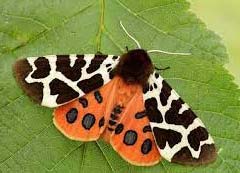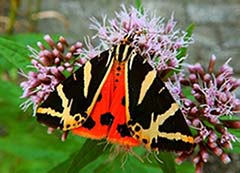Why we need to talk to our students about climate change and biodiversity within PSHE, SMSC, and as part of their wellbeing and mental health
“Over 70% of the UK’s resident and regular migrant butterfly species declined in either abundance or occurrence (or both) over the past four decades” – taken from Butterfly Conservation
Take a walk on a sunny day in a wood or open countryside– and what do you notice? Hardly any butterflies or day-flying moths, very few grasshoppers, and even the local hedgerows seem eerily quiet. These often stunning beautiful creatures are the barometers of health within our ecosystems and their demise signals trouble ahead for other insects, reptiles, amphibians, birds, and mammals.
We all know that insects, such as butterflies and moths, are in decline, but why does this matter and is it worth worrying about? Well the short answer to both questions is a resounding YES. The big picture is of course climate change, but whereas people can see and accept physical evidence of climate change from images and reports of flooding, melting polar ice, extreme heat and burning forests, the loss of some insects does not seem to get people so concerned, and more importantly, the loss has been gradual over the last 40 years, but has accelerated significantly since 2000.
Butterflies and moths are key indicator species, with butterflies being significant indicators of whether an ecosystem is healthy. For an ecosystem to be healthy, it should be biodiverse.
The concept of biodiversity is complex, but for the sake of simplicity a good ecosystem (natural ecological unit) should have good species richness, strong diversity of species and each population that makes up different communities within an ecosystem should have a good variety of genes (or more precisely alleles) within its population. The three fundamental elements of biodiversity must all be present: species diversity, species richness and genetic diversity.
So what are the main causes of the decline of both butterflies and moths and why should this matter?
The main causes of decline
Many of the reasons behind the decline of butterflies and moths are the reasons why so many other insects are in decline. There are three broad reasons for their decline:
Habitat loss and fragmentation of habitat: massive loss of meadows (97% decline), loss of fenlands (90%) and 80% loss of chalk and limestone grassland. In addition to loss and fragmentation of habitats is the loss of quality of habitats. Woods, for example, are rarely coppiced these days, which would keep woods sunny and open – perfect for certain species of butterflies, such as woodland fritillaries. As for other habitats (farmland, lakes, rivers) they are invariably impacted by human land use, urban development, neglect or pollution. Hedgerows loss is just another example. Hedgerows on average can contain thousands of different species, many of those insects, including numerous butterflies and moths. But the UK has lost something in the order of 50% of its hedgerows since 1940s, and a typical small area of hedgerow can contain up to 1500 different species.
Chemical pollution: pesticides are the main culprit (in particular a group of insecticides called neonicotinoids), but farm run off in terms of fertilisers has also impacted the growth of key plants that butterflies and moths feed on. The toxic bioaccumulation impact of pesticides is also worth noting as both butterflies are moths have larval stages that are significantly impacted by predation. There is also mounting evidence that radio waves and microwaves, used as part of telecommunications, can also interfere with insect’s navigational abilities. The 5G network can generate wave frequencies up to 120GHz and researchers are unsure of the impact this may have on flying insect populations.
Climate change: as temperatures rise and winters become milder and summers hotter, insects, like most organisms are moving north. Many animals are on the move towards their respective poles in order to seek cooler air and environments. Butterflies and moths are no exception. We are witnessing what researchers have called a “universal redistribution of life on earth”, but while some are winners (such as the bark beetle and mosquito) most species will suffer as they migrate north to a point where their food plants do not grow in abundance and they risk extinction at the complete upper range of migration. It has been estimated that animals are moving on average about 5 metres/day towards their respective poles. The beautiful moth, the Jersey Tiger Euphagia quadripunctaria, was until fairly recently confined to the far southwest of England, but it has now moved eastwards and northwards. Significantly, the equally stunning Garden Tiger Artica caja, once common all over England, has declined by 90%, but it remains abundant in Scotland.


Where insects and animals migrate towards high land or mountains, their migration is generally halted, so mountain ranges are major barriers when insects move north. Climate change also impacts the phenology of insects. Phenology is the analysis and study of periodic events in the life cycle of organisms and how these are influenced by seasonal changes as well as other factors, such as elevation. There is no doubt that mild winters, early/late spring and extreme wet weather all can play havoc with life cycles.
Entomologists from Krefeld, Germany collected flying insects over a number of years from one site and collated similar data from 63 German protected areas. Their results showed a 76% drop in insect biomass between 1989 and 2016. This finding, backed up by detailed data analysis and statistical analysis, became the sixth most discussed scientific paper of 2017. A further more recent study in the Netherlands reported that butterflies have declined by at least 84% over the last 130 years.
So why does it matter?
The disappearance of insects is of concern because without them, life on earth would not really be habitable. Insects are critical as:
- Pollinators
- Soil engineers
- A part of a food chain for other organisms
- Pest controllers
- Seed distributors
- Resource providers – honey, silk, etc.
- Decomposers and recyclers of nutrients
The above list is only a fraction of what insects provide for us and other organisms. The decline of insects such as butterflies and moths matters because of the above, but also because they provide us with natural aesthetic pleasure. The famous biologist E.O Wilson used the phrase Biophilia to describe our innate desire to connect to nature and derive pleasure from it. Too many of us, including teenagers, hardly ever venture into a meadow or woodland or take walks in green areas and enjoy the peace, serenity, bird song and sheer beauty of nature. The benefits are tangible: lower blood pressure and a respite from the modern environment, replete with noise and stress. Indeed, green therapy also significantly helps lessen anxiety and acts as a positive mental health support.
Aside from the aesthetic pleasure we can obtain from watching butterflies flitting from flower to flower and the positive wellbeing thus derived, the loss of such insects tells us something significant about the state of our parks, countryside, gardens and forests. The decline of insects inevitably will mean the decline of reptiles, amphibians, birds and mammals, most of which are dependent on insect populations, directly or indirectly. Less insects means less food, which could result in the collapse of many ecosystems causing huge food loss problems and possibly starvation for many. The cascading effects of this are already evident in Puerto Rico, where a recent study revealed a 98% fall in ground insects over 35 years.
The hard truth is that humans cannot survive without insects and the decline of butterflies and moths in the UK is a serious signal and alarm to us all that unless we do something about it, our children’s children will start to witness the harm this terrible tragedy will reap on us all.
As educators, it our duty to remind our students of the importance of rewilding areas, keeping gardens that attract insects by creating microhabitats, and understanding that we are witnessing the start of the sixth mass extinction in earth’s history, but at the most alarming rate. As educators it is important that we assimilate climate change within our PHSE curriculum, as well as our SMSC delivery and our mental health and wellbeing coping mechanism. It is our strong belief that some mental anxiety is caused by the fact that so many young people are disconnected from nature and fail to witness the wonderful spiritual benefits from a walk in nature and to recognise that they are not alone, but part of a wonderful tapestry of life.
This article was written by John Dalton & David Game, Co-Principals, David Game College
Return to the list of CIFE Intercollegiate Articles

